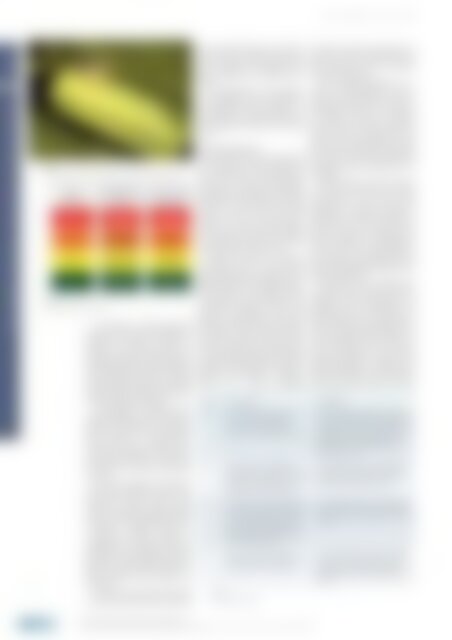atw 2018-10
You also want an ePaper? Increase the reach of your titles
YUMPU automatically turns print PDFs into web optimized ePapers that Google loves.
<strong>atw</strong> Vol. 63 (<strong>2018</strong>) | Issue <strong>10</strong> ı October<br />
DECOMMISSIONING AND WASTE MANAGEMENT 524<br />
| | Fig. 3.<br />
Range of Hazards Considered for Robot Controlled Laser Cutting Facility.<br />
| | Fig. 4.<br />
Laser Area Classification System.<br />
The defence in depth approach<br />
adopted for the safety assessment of<br />
chemotoxic hazards is broadly to<br />
similar to that described above for<br />
radiological hazards, with indivi dual<br />
hazards identified by HAZOP studies<br />
and consequences based on industry<br />
standard Hazard Class and Category<br />
Codes, Hazard Statement Codes and<br />
Dangerous Toxic Loads (DTL).<br />
For significant chemotoxic faults<br />
(operator fatality, or serious danger to<br />
public) the designation of a passive<br />
safety measure, or two independent<br />
safety measures is required. Alternatively,<br />
it is possible to claim Operational<br />
Safety Measures, which must<br />
be carried out to prevent chemotoxic<br />
exposure.<br />
For lesser significant chemotoxic<br />
faults, (serious harm relates lower tier<br />
chemotoxic hazards, which could<br />
result in an operator being seriously<br />
injured requiring prolonged medical<br />
treatment, or, physical distress to<br />
a member of public), require the<br />
designation of one safety measure or<br />
alternatively, it is possible to in some<br />
instances to claim Operational Safety<br />
Measures, about operator actions, or<br />
plant conditions which support the<br />
safety case.<br />
There is no requirement to iden tify<br />
any safety measures in the safety case<br />
for chemotoxic hazards for which fall<br />
below the low consequence chemotoxic<br />
thresholds, with residual risk<br />
being addressed by COSHH assessments.<br />
The philosophy for the identification,<br />
designation and substantiation<br />
of chemotoxic safety measures is<br />
performed in a broadly similar way to<br />
the radiological approach described<br />
earlier.<br />
Laser assessment<br />
In the UK lasers and laser systems fall<br />
into 7 categories: 1; 1M; 2, 2M; 3R; 3B<br />
and 4, where Class 1 is the safest class<br />
and Class 4 is the most potentially<br />
hazardous. The 5kW laser used within<br />
NNL’s Robot Controlled Laser Cutting<br />
Facility is a Class 4 laser. The high<br />
energy of these lasers makes them<br />
suitable for metal cutting applications,<br />
and also renders them capable<br />
of causing severe injury to eyes and<br />
skin, and of posing a fire hazard.<br />
Exposure to direct or scattered<br />
laser light presents a direct hazard<br />
from risk of injury to the skin or eyes<br />
when Maximum Permissible Exposure<br />
(MPE) levels are exceeded. There<br />
is a possibility of life changing injury<br />
( including blindness) from this<br />
hazard, or theoretically, death. Most<br />
high power lasers used for cutting do<br />
not utilise visible spectrum light,<br />
therefore there may be a risk to operators<br />
who could become inadvertently<br />
and unknowingly exposed to harmful<br />
quantities of invisible laser energy. In<br />
addition, laser cutting a substrate<br />
gives rise to fumes containing<br />
Area Description Comment<br />
L4<br />
L3<br />
L2<br />
L1<br />
This is an area in which laser<br />
cutting will be undertaken,<br />
with no man entry area or<br />
personnel to access the location.<br />
This is an area in which laser<br />
cutting will be undertaken where<br />
man access is required for routine<br />
operations/ maintenance, or<br />
recovery from fault conditions.<br />
This is an area in which no laser<br />
use will be undertaken. However<br />
it is in area adjacent proximity to<br />
an L3/4 area. Personnel in this<br />
area could be exposed to laser<br />
light if the barrier between the<br />
areas is compromised.<br />
This is an area at a sufficient<br />
distance from the laser that harm<br />
to personnel is not credible.<br />
| | Tab. 1.<br />
Laser Area Descriptions.<br />
particulate within the respirable size<br />
range of 0.1-<strong>10</strong> mm, which poses a serious<br />
operator hazard of harmful<br />
parti culate inhalation.<br />
Laser cutting deployment in a<br />
nuclear decommissioning environment<br />
has the potential to result in a<br />
radiological and/or non-active chemical<br />
airborne release as discussed<br />
previously. Laser cutting is carried out<br />
with an assist gas, which itself may<br />
disturb loose contamination on the<br />
surface of the substrate. The potential<br />
for the assist gas to impact upon fixed<br />
ventilation systems should also be<br />
considered.<br />
Further indirect hazards relevant<br />
to the nuclear industry may include<br />
mis-direction of the laser beam<br />
resulting in accidental breaches to<br />
radiological or chemical containment<br />
plants. Such an event could cause a<br />
release of activity or chemical toxins<br />
into the operator’s surroundings or<br />
off-site. There is also the potential of<br />
laser damage to radiological/chemotoxic<br />
safety significant equipment and<br />
ignition of materials.<br />
The Safety Case for NNL’s Robot<br />
Controlled Laser Cutting Facility developed<br />
a unique approach to area<br />
classification for the application of<br />
high powered lasers in nuclear operations<br />
to facilitate the production of a<br />
robust and proportionate HMS. The<br />
area classification system allows potential<br />
consequences and expected<br />
controlled measures required to be<br />
readily identified in a proportionate<br />
manner. Four distinct areas are identified<br />
based upon the type of access<br />
The ‘not credible’ argument is based<br />
on specific areas which personnel are<br />
not able to access such as a radiological<br />
shielded cell. If access could occur,<br />
and prevention is reliant upon safety<br />
measures the area should be considered<br />
an L3 area.<br />
The ‘credible’ argument is mitigated<br />
by procedural control and safety interlocks<br />
to prevent operator exposure<br />
during man access area entry.<br />
The ‘credible’ argument is mitigated<br />
by safety measures to prevent operator<br />
exposure in an area adjacent to an L3/<br />
L4 area.<br />
The ‘not credible’ argument is based<br />
on distance of the operator from the<br />
laser beam so that they are beyond<br />
the Nominal Ocular Hazard Distance<br />
(NOHD)<br />
Decommissioning and Waste Management<br />
Laser Cutting for Nuclear Decommissioning: An Integrated Safety Approach ı Howard Chapman, Stephen Lawton and Joshua Fitzpatrick

















